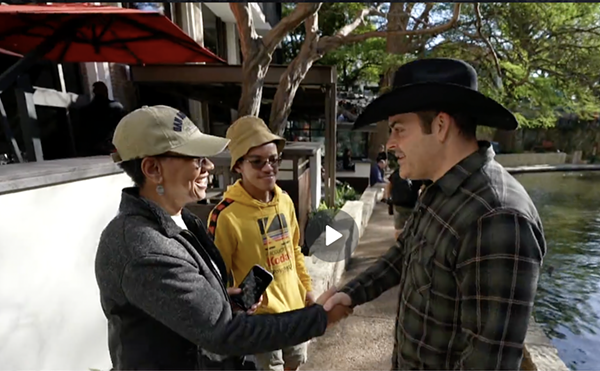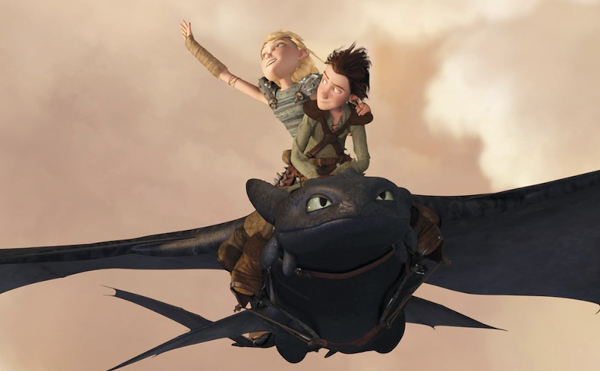“It means no worries for the rest of your days
It’s our problem-free philosophy
Hakuna Matata!”
— “Hakuna Matata,” The Lion King
Disney’s earth is a stunning spectacle of nature’s richness, packaged and delivered without the faintest whiff of corporate deception. But don’t worry, it’s in there.
Racing from above the Arctic Circle, across the northern forests, and into the tropics and rain-bare African plains, the film’s 60 camera crews covered their beat. Unfortunately, if earth is intended as a portrait of our planet, Disney’s first offering out of its Disneynature branch not only fails to relay the warm flush in Gaia’s cheeks, the actual emptiness of her oceans, and the dramatic and accelerating loss of wilderness, but actually appears to offer insights into an alternate universe where the “circle of life” is unbroken and untroubled.
As an awe-inducing report from the frontier, earth belongs among the very best of nature filmmaking. And if this were 1970, when our first full-color glimpses of our tender planet helped to kick-start the first Earth Day and modern-day environmentalism, its visual scope would be enough to merit resounding plaudits and generous praise. But we’re well past that.
The rumbling authority of James Earl Jones’s signature baritone gives the viewer some of the basics of earth science. We learn of the season-creating tilt in the Earth’s axis, without which “everything else would be different.” We learn how the sun and seas bring water to the land. How mountaintop glaciers lock up and release their vital waters. And how the young of a stream of species, presented in inimitable Disney fashion, learn to slide, prance, trudge, race, die, feast, and sing.
That’s right: You will gush helplessly when newly hatched Mandarin ducks leap from their roost for their first featherless aerial address. You will tense with anger when a pride of lions, captured with night-vision cameras, takes down a helpless, drought-exhausted African elephant. Disney studios have a long, effective history of such tooth-and-claw filmmaking, going back to the True-Life Adventures series of the 1950s that included “Seal Island,” “Jungle Cat,” and “Beaver Valley.” Thankfully, the ever-steady Jones is there to put the killing in perspective: “This is the circle of life that most of us in our urban lives have lost touch with.”
Of course, he’s right. But you can’t help wonder if the Kalahari Bushmen wouldn’t find their own stomachs quivering just a bit if they could observe such a kill through slow-motion photography on a massive screen soundtracked by strains of patient French horn and pleading violin.
In recent years, there has been no shortage of such astounding imagery entering the market from a variety of directions. Likely the success of the French documentary March of the Penguins — which took 2005’s Best Documentary Feature at the Academy Awards along with more than $70 million at U.S. and Canadian box offices — has played a part in Disney’s return to nature. Disney appreciated the BBC’s Planet Earth series so much that it brought on the creative team of directors Alastair Fothergill and Mark Linfield, and purchased the rights to repackage some of the BBC’s footage in the hour-and-a-half earth.
As with the best nature documentaries, except, perhaps, another French offering, Winged Migration, there are nearly as many kill shots as fawning infant inspections. Just as the popcorn shells in my gut were settling back into place after the elephant take-down, along comes the Great White — some of that BBC footage, slowed down and backed by an orchestra — sucking up seals like sardines. It has none of the sensuality that marked the cheetah as she mounted and embraced her victim before slipping thirsty jaws almost tenderly around its trembling neck. This is a flash of killing jaws and merciless speed.
When the tranquil humpback whales entered the picture, the child in front of me cried out with delight, “It’s Shamu!” Before I had a chance to contemplate the role of zoos and aquariums in our natural education, a school of coppery sailfish replaced the humpbacks on the screen in a darting and dizzying feeding rush.
I realize earth is not intended as An Inconvenient Truth. But if it is truly intended as “the ultimate portrait of the planet,” as the promotional literature promises, we are being misled by dramatic omission. The eruption of sailfish, for instance, reinforces long-held beliefs about the sea’s bounty. The truth is, our waters are no longer rich. The ocean’s largest fish species, like these majestic sailfish, are already near collapse. In as few as 40 years, all of the major food species in our seas could be depleted by as much as 90 percent, according to international scientists.
A word to this effect from Disney would have been welcome, and it’s not the least of the film’s haunting omissions.
“At a time when we are all becoming increasingly aware of global warming and the fragile state of the planet we call home, earth is a movie of the moment,” Fothergill asserts. But as the world’s premier scientists are suggesting the window to address global warming is closing, and with it our last chance to prevent runaway climate disruption that could unseat homo sapiens and a vast swipe of our cohabitants, earth is careful to never once join the words “global” and “warming.” The closest Jones’s script comes is in referencing the plight of the polar bears.
“Each year, as the planet warms,” Jones offers, “there is less and less ice. It’s a disaster for polar bears.”
Supposedly, earth contains a “subtle, yet powerful” message intended to inspire audiences to rush out and attend to nature, but I could find no reason to worry in the film’s script.
As I’m being handed a young pine tree on my way out of the theater (flown all the way from Holland for Disney’s audiences, I’m told), I reflect that the message reaching the audience is little more than a retrofit of the best of Wild Kingdom; good filmmaking, but bad portraiture.
The closing words spoken over the film’s last dramatic death — “Yes, it’s full of harsh realities, but sometimes it’s just paradise” — harken back to Disney’s cash-cow, problem-free philosophy of The Lion King, and a neatly closed-loop system known as the circle of life. •















